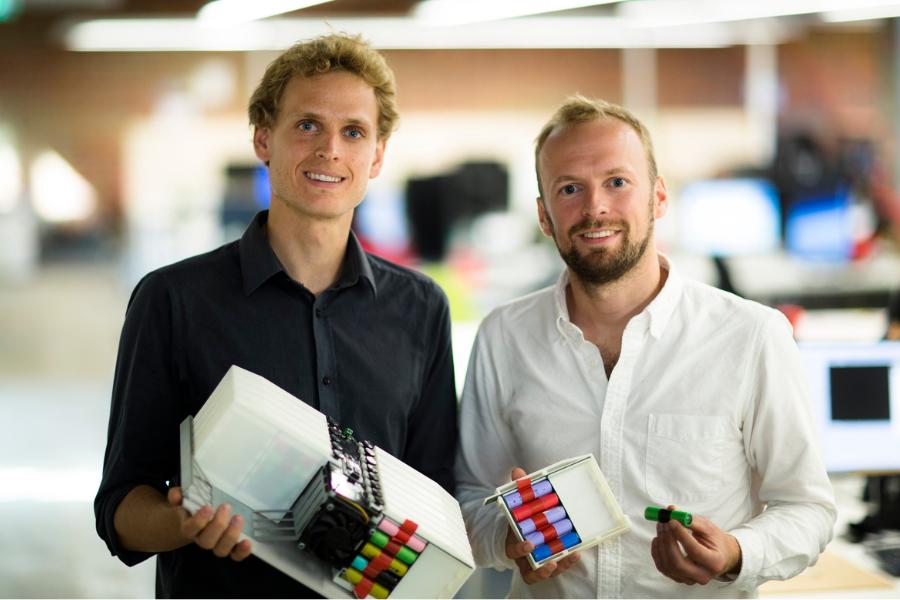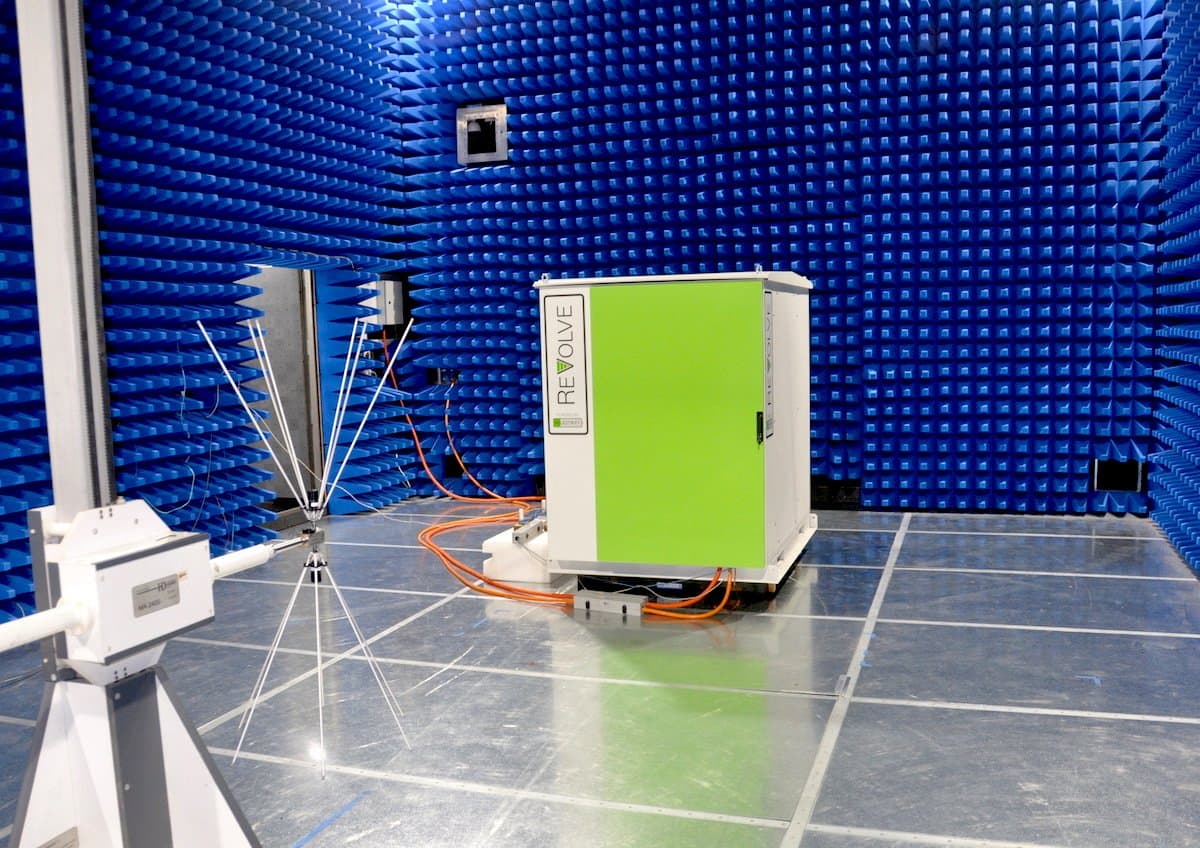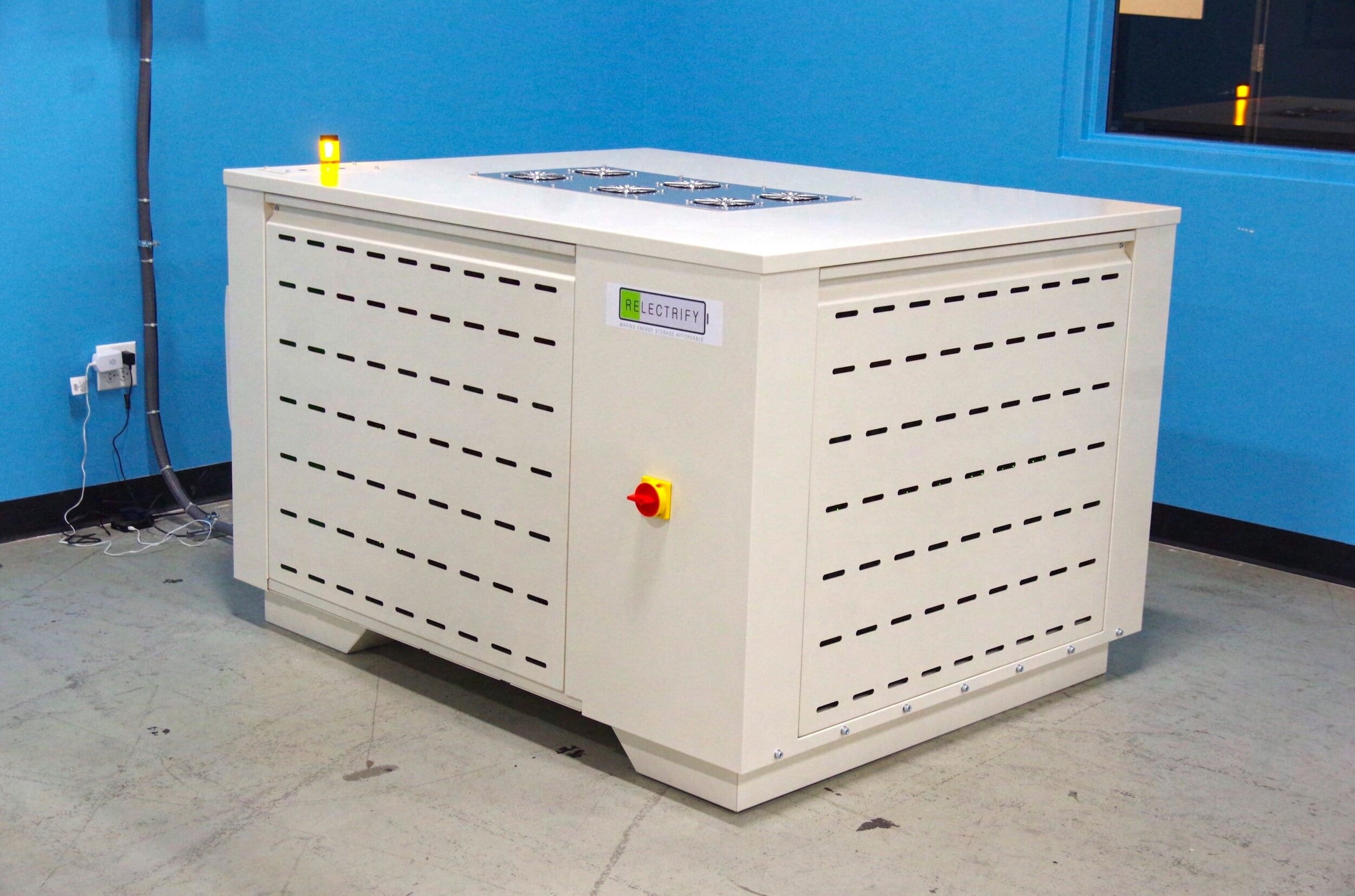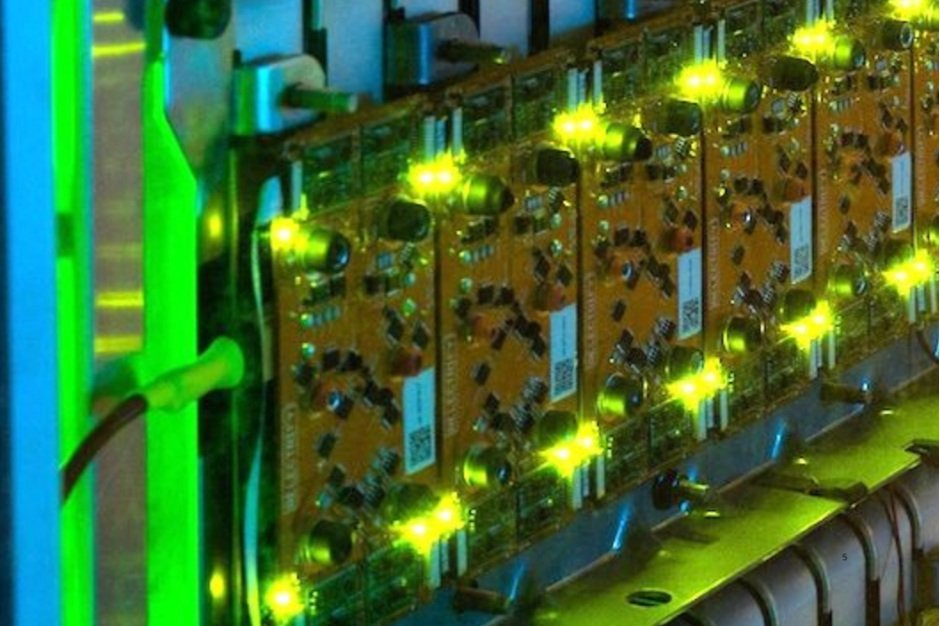
Relectrify Insights
The road to certification
Pictured above: Co-Founders Valentin Muenzel and Daniel Crowley in 2016
By Relectrify CTO Niall Mai
Read the official press release for more information.
A passion project
How do you transform the way something is engineered? Painstakingly, it turns out.
The ReVolve® battery energy product achieved certification to comply with stringent international safety standards earlier this month. It’s the first time that a commercial and industrial scale storage product, using cell-level control to generate AC output without a conventional inverter, has been certified to the internationally recognised IEC standards. It is also the first stationary battery energy storage product using repurposed second-life EV batteries to have been certified for on-grid deployment in Australia.
Relectrify’s technology is a world-first, featured in a world-first product — the ReVolve® battery energy storage system (BESS). It’s a passion project turned into “revolutionary technology.” The project received funding from ARENA as part of ARENA’s Advancing Renewables Program.
Powered by Relectrify’s groundbreaking BMS+Inverter technology, the ReVolve® product repurposes high-quality second-life batteries from electric vehicles, and is designed for industrial and commercial installations from 120kWh to 2MWh.
The new pandemic normal
We embarked on the certification journey for a world-first product, not knowing how long it would take or how complicated the process would be.
Test labs for battery management systems (BMS) don’t exist in Australia, so our options were limited to the US, Asia or Europe. And of course, COVID-19 complicated the whole process. We couldn’t travel or send engineers abroad to work with the certification company as a team typically would.
We sought quotes from a number of certification companies and went with a US-based company due to an existing relationship between the certification house and our customer and partner, Dynamic Manufacturing. Just like most companies, we had to adapt and pivot to working with the new pandemic normal, which for us meant relying on partners who believed in our vision. Dynamic Manufacturing offered to build and test the ReVolve® unit at their US-based facility and then transport it to our chosen certification institute. We shipped items directly to them and had some parts delivered domestically within the US.
The ReVolve® unit that was used throughout the certification process will now be sent back to Dynamic where they will be able to deploy it on-site to create energy savings for their own factory.
In the weeds
The certifications institute’s first challenge would be to work out how to accurately quote the work given the uniqueness of our product — something totally different from existing conventional products. The team had to supply a quote not knowing how the actual testing would be done.
To understand why our situation is so unique is to understand how our technology differs from conventional inverters and battery management systems. Relectrify technology combines the BMS and the inverter – typically individual systems – into a single electronic system which integrates directly with the battery cells.
 Electromagnetic compatibility (EMC) testing of the ReVolve® unit in an anechoic chamber
Electromagnetic compatibility (EMC) testing of the ReVolve® unit in an anechoic chamber
This posed a significant challenge for the certification team since components and subsystems that would usually be tested and certified individually could not be isolated and treated independently. Relectrify and our certification partner’s team realized that we would not be able to follow standard testing procedures and had to work closely together throughout the process to develop approaches and methodologies to overcome these challenges.
Even the test teams at the certification company were separated into teams along conventional product lines – battery; BMS; Inverter. Due to our unique technology, the separate teams would come together to test different aspects of functionality of our unique product.
Moreover, each set of functionality required separate ‘critical component lists’. These lists detail the safety-critical components used in the construction of a conventional product. Due to the overlapping nature of our technology — the inverter and BMS and batteries being interconnected — the list of critical components became a unique challenge. If a component of one of the lists would change, the list would then need to be approved by all of the testing teams. This happened on more than one occasion.
In all, significant time and engineering effort was spent on interpreting testing standards and developing approaches to accommodate our new technology — yet make sure it met the full intent of the standards, both in terms of performance and safety.

From the archives: Relectrify’s 3-phase 60kWh battery system at Dynamic’s facilities in Hillside, Illinois in 2020
A true technical challenge
From early on in the certification process, we recognised that testing of the BESS and Relectrify’s cell-level control technology would pose a technical challenge for the certification institute and indeed, the testing was a challenge in and of itself.
Relectrify determined that we needed to build our own grid simulator and replicate the certification body’s test system on-site in our Melbourne headquarters. This enabled us to automate and run many of the grid certification tests – and reproduce the exact testing processes undertaken by the test lab in the United States. This would allow for us to work in tandem with the American certification team so that we could adapt or respond to any issues as they arose. This sophisticated level of in-house testing would give us a huge technical advantage, particularly as we made improvements to the product, re-tested it and confirmed that we could continue to meet the target certification standards.
The certification team had to use totally new methods to test our product which added considerable time to the testing process. For instance, for conventional systems, a BMS would be tested in isolation in a thermal chamber to evaluate its performance in hot and cold conditions. Since our technology is connected directly to the battery cells we needed to engineer a way to test our system as if it were a conventional one.

Click the above image to view a hyper-lapse of our team building a ReVolve® unit in our West Melbourne office.
Key takeaways
We’re on the other side of certification now and we’re proud of what we have achieved. There were lessons learned that could not have been obtained any other way: this has made this an incredibly important process for Relectrify.
The certification process has paved the way for our customers and partners to integrate our BMS+Inverter cell-level control technology into their energy storage products. We can help test our customers’ new products using our test beds and grid simulator; and we have the capability to verify that new products can pass major certification tests before we commence the formal process. Through the parallel testing, we learned how to simplify, optimise and create efficiencies for the next generation of products utilising Relectrify’s ground-breaking technology.
We’re extremely proud of our engineering team and this accomplishment in particular. We’re confident that we can navigate future certification with ease. We appreciate the support and commitment of our certification partner and have developed a deep and trusting relationship with them and have the confidence and capability to do it all again, with co-developed projects with our partners. Better and faster than before.
We can’t wait to put our cell-level control technology on the map.




